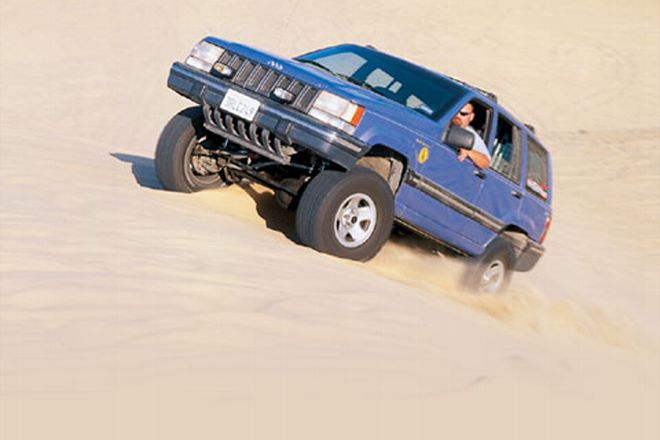
 Drew Hardin
Contributor
Photographers:
ManufacturersMichael Rudd
Drew Hardin
Contributor
Photographers:
ManufacturersMichael Rudd
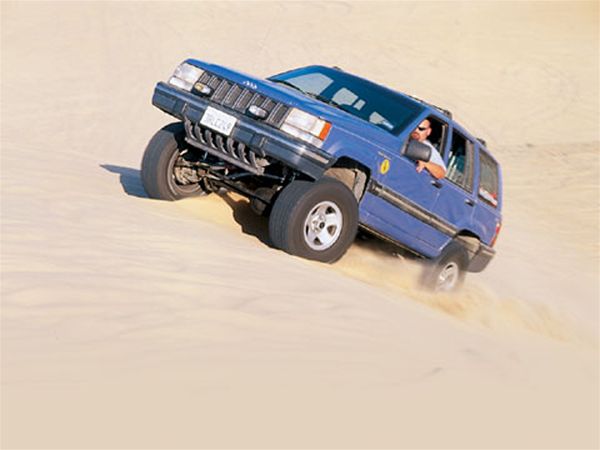
Did you see "The Fast and the Furious" last summer? It was a really silly movie about drag racing rice rockets, but it made stars out of an actor called Vin Diesel and a gas called nitrous oxide. Vin we can take or leave, but nitrous is far more fascinating stuff. It's "throttle in a bottle," a means to literally bolt on horsepower. Sounds good if you're trying to fly down the quarter-mile, but does nitrous have a place in a four-wheeler's world?
The answer to that depends on how you use your 4x4 and where you think it needs improvement. Nitrous is what's called a power adder. If you want your V-6 to feel like a V-8, or your small-block to feel like a big-block, bolting on a nitrous kit may be one of the easiest ways to get there. Unlike other power upgrades, like a turbo or supercharger, nitrous-oxide injection only works when you want it to. When the system is turned off, your engine operates as if the gas wasn't there. So to anyone else driving your truck - your mom, your wife, your dumb boyfriend-it feels like it's still stock. Once you've armed the system and mashed the throttle, though, it's magic time.
So, just how much power are we talking about? As a general rule of thumb, if you're leaving your engine otherwise stock, you can add up to 140 hp to a small-block V-8, 75-100 hp to a V-6, and 125-200 hp to a big-block V-8. If you're willing to make a few additional engine modifications, the power numbers can go much higher.
What'll this cost you? After a quick check of a couple of performance retailers, we found nitrous kits for small-block V-8s in GM pickups for between $560 and $660. Some of those systems were even 50-state legal.
Want to know more? We thought you'd never ask.
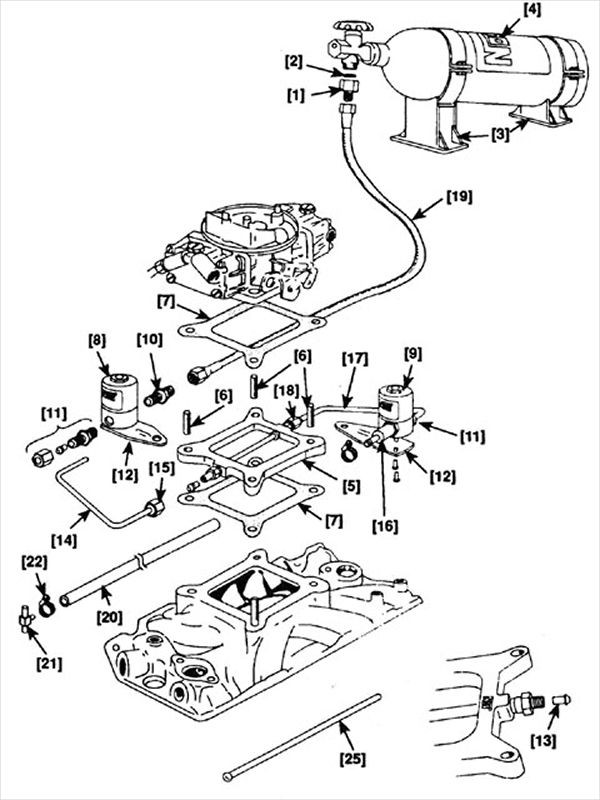 This illustration shows how a wet system is plumbed between the carburetor and intake manifold. The cylindrical objects labeled 8 and 9 are solenoids; 8 controls the flow of nitrous, 9 the supplemental fuel.
This illustration shows how a wet system is plumbed between the carburetor and intake manifold. The cylindrical objects labeled 8 and 9 are solenoids; 8 controls the flow of nitrous, 9 the supplemental fuel.How Nitrous Works
Probably the biggest misconception about nitrous is that it's some sort of super racing fuel. It's not. Nitrous oxide is an oxygen-carrying substance (with the chemical formula N2O) that is in a liquid state when it's stored in a bottle. Injecting nitrous into an engine turns the liquid into a gas, and the temperature of combustion releases the oxygen molecules so they're available to the combustion process.
In a way, nitrous oxide is like a chemical supercharger or turbocharger. It introduces more oxygen into the engine so it can burn greater amounts of fuel to increase horsepower production. Also, because the nitrous is so cold when it enters the engine, it lowers the temperature of the whole intake charge in the manifold by as much as 65 degrees F, making the air/fuel mix denser. A denser mix means more air and fuel can pack into the combustion chamber, which also boosts power
But nitrous oxide does require supplemental fuel to make power. If you don't put more fuel into a nitrous-injected engine, all that extra oxygen will just burn the existing fuel faster, resulting in pre-ignition and damaged pistons. For this reason, nitrous-oxide kits include some means of pumping additional fuel into the engine.
There are three basic forms of nitrous delivery: wet, dry, and direct-port. Only the first two really apply to trucks, as the direct-port method (where nitrous and fuel are delivered directly into each intake port) is found mostly in racing applications.
Wet delivery, used with a carburetor or throttle-body injection, is called that because the nitrous is introduced at the same point as the fuel, and the two move together as a plume of atomized fuel and nitrous vapor through the manifold and into the cylinders. Typically, the nitrous and supplemental fuel are sprayed from a plate mounted either directly below the carb or, in a TBI application, a few inches ahead of the throttle body.
So-called dry nitrous delivery is used in port-injected engines, where the intake manifold is designed to flow air only. The nitrous is sprayed into the air intake, and the supplemental fuel comes from the fuel injectors at the ports. To get the extra fuel from the injectors, electronics in the nitrous system fool the engine's ECU into thinking the motor is cold and is receiving cold air. (This is why the temp gauge on the dash will fall to stone cold when the nitrous activates.) Under those conditions, the computer tells the injectors to spray fuel for a longer period of time. The computer also dials back any advance in the ignition timing, which is a good thing. Since nitrous oxide accelerates the burn rate of the fuel, you don't want the ignition system doing anything to start the burn sooner.
Don't Call It "Noss"
One more thought about nitrous and "The Fast and the Furious": The street racers in that movie called nitrous oxide injection "noss," after the letters "NOS" stamped on the nitrous bottles. Don't do that. It'll make you look stupid. "NOS" is an acronym for the Nitrous Oxide Systems brand. It's a word like "Kleenex" on the side of a tissue box. Some bright pennies in the import racing community do actually call it "noss," and the movie was imitating that lingo. But they're just wrong. If you want a nickname for nitrous oxide, try "squeeze," "spray," "juice," "laughing gas," "the bottle," or some other term that real racers use.
When Nitrous Works
There are two terms that are important to understand about using nitrous oxide: armed and activated. A nitrous system is armed when the system is turned on and the valve from the bottle is open. There's no injection going on at this point, but the system is ready. Nitrous injection is activated by a switch or trigger that opens the solenoid to release the nitrous and, at the same time, introduce supplemental fuel to the intake charge.
Since they're intended for drag-race-style, high-speed bursts of power, most nitrous systems are designed to activate at wide-open throttle (WOT). Activation is not always done via the steering-wheel-mounted button that the "Fast and Furious" boys made so famous. It certainly can be, but some systems activate automatically. The EFI-engine kits from Nitrous Oxide Systems (NOS), for example, have what's called a WOT box with a wire lead that's connected to the throttle-position sensor. When the lead reads voltage that indicates the throttle is wide open, it activates the nitrous solenoid.
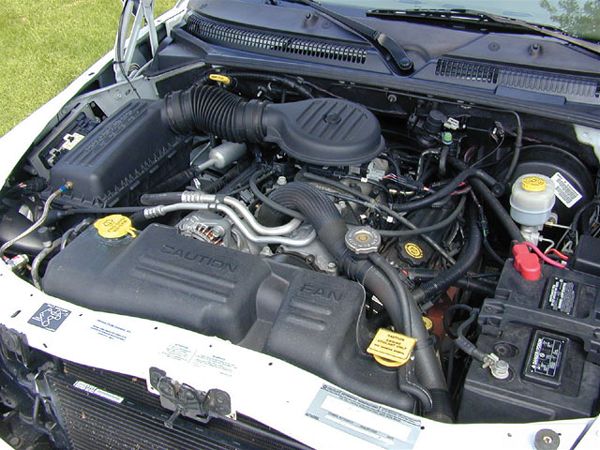 Here's how the dry system looks under the hood of a 2000 Durango. Pretty stealthy, eh? The only obvious tip-offs to the system's existence are the braided hose leading into the airbox and the solenoids, which in this photo are barely visible.
Here's how the dry system looks under the hood of a 2000 Durango. Pretty stealthy, eh? The only obvious tip-offs to the system's existence are the braided hose leading into the airbox and the solenoids, which in this photo are barely visible.
And here is where we get to the heart of the question, "Does a four wheeler need nitrous?" How often do you find yourself at WOT when you're four-wheeling? Probably never, unless you spend a lot of time dune-bashing or mud-bogging. So are you out of luck as far as nitrous goes? Not necessarily. Some companies make controllers that feed nitrous progressively into the intake system, taking nitrous injection out of the all-or-nothing realm of WOT use and adapting it for folks who may want an occasional pick-me-up, like when climbing a rutted hill, blowing over a dune, or pulling a trailer up a long grade.
There are a couple of types of partial-throttle controllers on the market. The one that's most 4x4-friendly is the throttle-position-controlled unit from NOS. Unlike a time-based controller (which is better suited to drag-race applications), the throttle-position controller feeds nitrous into the system gradually as you roll into the throttle.
One word of warning about the progressive controllers, though: They may not be 50-state emissions legal. That's because the California Air Resources Board (CARB), which often drives issues of legality with its testing and certification processes, granted its exemption for nitrous kits based on the fact that the nitrous would only be used under WOT conditions, and that most street-driven cars see very little time at WOT. So, sorry Californians. Unless you want to disregard the law, you're back to nitrous as a WOT tool, only.
Tuning For Nitrous
The good news is, if you're adding a relatively mild amount of nitrous to a bone-stock engine, there's little tuning to be done. Nitrous shots that produce around 100 hp won't overly tax your V-8's reliability. Just make sure the engine is in a good state of tune and that you're using premium gasoline. If you have a fuel-injected engine, it's a good idea to clean and match the flow of the injectors, since they will have to work harder (pumping anywhere from 30 to 40 percent more fuel) when the nitrous is activated.
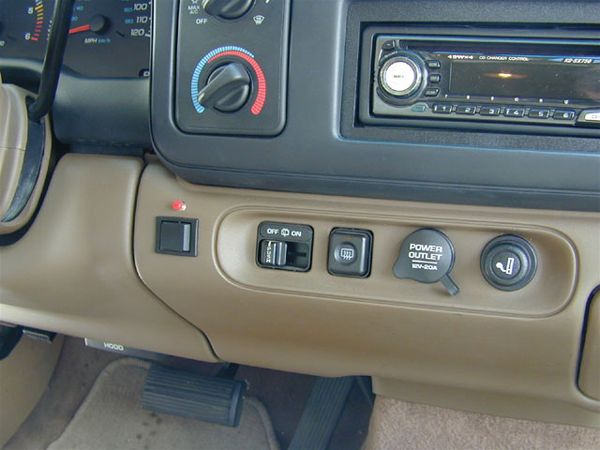 That small switch on the left (below the temp control dial) arms the nitrous system in Golightly's Durango. The little red button above it is used to purge the lines. Golightly doesn't use a button to activate the nitrous; the system does that automatically when it reads voltage on the throttle-position sensor indicating that the pedal is to the metal.
That small switch on the left (below the temp control dial) arms the nitrous system in Golightly's Durango. The little red button above it is used to purge the lines. Golightly doesn't use a button to activate the nitrous; the system does that automatically when it reads voltage on the throttle-position sensor indicating that the pedal is to the metal.
Some nitrous system makers recommend changing spark plugs for nitrous use, either to a plug with a short ground strap or one in a cooler heat range. We're not going to take sides in the debate-go with the advice given to you by your nitrous supplier of choice.
One area the nitrous companies agree on is this: Be conservative when adding nitrous to your engine. Make sure you've got plenty of extra fuel running to the system, and start out with small nitrous jets and work up to the bigger shots when you're ready. That'll save you from making mistakes that may result in severe engine damage.
The experts told us engine modifications for nitrous use are only necessary if you go really aggressive-150- to 200hp nitrous shots, for example-as the cylinder pressure and energy generated with that much power production will stress the pistons, rods and head gaskets.
In a 4x4, however, even modest nitrous use may require modifications behind the engine. On the street, if you put too much power to the wheels, chances are good you'll just overwhelm the tires and blow the extra power off in a cloud of tire smoke. On the trail, though, grippy tires may not spin as easily. So the weakest link may be somewhere else, like the axles, U-joints or transfer case. Unless you've got a really bulletproof driveline, take extra care the first few times you use the nitrous off-road.
This is just a starting point if you're interested in adding nitrous to your 4x4. There's a ton more information out there on everything from nitrous bottle warmers to fully custom nitrous setups. Check out the nitrous system manufacturers listed here for more information about your particular setup.





